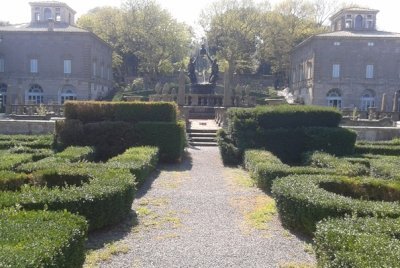Italy
Villas of the Papal Nobility
The Villas of the Papal Nobility is a series of 15 villas built from the second half of the 16th century onwards for the higher clergy and by members of the aristocracy connected to the papal court in Rome. The villas were built in two main areas in Lazio: in the northern area, around Viterbo, and in the south-eastern area, on the Colli Tuscolani. The vast parklands surrounding them were accorded great importance, with formal, "artificial" gardens integrated into the natural landscape.
Site Info
Official Information
- Full Name
- Villas of the Papal Nobility (ID: 351)
- Country
- Italy
- Status
-
On tentative list 2006
Site history
History of Villas of the Papal Nobility
- 2006: Added to Tentative List
- Added to tentative list
- Type
- Cultural
- Criteria
Links
- UNESCO
- whc.unesco.org
All Links
UNESCO.org
- whc.unesco.org — whc.unesco.org
Community Information
- Community Category
- Secular structure: Residence
Travel Information
Recent Connections
News
No news.
Recent Visitors
Visitors of Villas of the Papal Nobility
- Cezar Grozavu
- Chinmaya
- Christoph
- Clyde
- Daniel Chazad
- Dan Pettigrew
- David Berlanda
- Dimitar Krastev
- Dr. Caligari
- Errol Neo
- Federico P.
- Frédéric M
- Hasco
- Jakob Frenzel
- Jawnbeary
- Jonas Kremer
- Jurre
- Klara Woodson
- Lisu Marian
- Matejicek
- Monica Tasciotti
- nan
- Paul Schofield
- Philipp Peterer
- Randi Thomsen
- Riccardo Quaranta
- Sebasfhb
- Stanislaw Warwas
- Svein Elias
- Szabolcs Mosonyi
- Szucs Tamas
- Tarquinio_Superbo
- Thomas van der Walt
- tommasorossotti
- tony0001
- VLabhard
- Walter
- Wojciech Fedoruk
- Yevhen Ivanovych
Community Reviews
Show full reviews
In 2022 I visited 7 locations of this tWHS as well as other related sites which are not included among the 15 locations.
Being based in Grottaferrata and in Viterbo for a couple of days I first ticked off Villa Grazioli and Villa Muti in Grottaferrata proper and Palazzo Chigi in Ariccia. Grottaferrata itself is quite pleasant but the locations I chose to visit were either closed or not very promising both from outside as well as inside. Same applies to Ariccia. In Grottaferrata I particularly enjoyed visiting the "Greek Abbey" or the Exarchic Monastery of Saint Mary, which has nothing to do with this tWHS, and from there I picked up a couple of brochures on the rather nearby WHS beech forest locations of Monte Raschio and Monte Cimino. To make a long story short, I decided against visited the remaining 8 components in and around Frascati, in favour of covering the newly spotted 2 WHS locations, covering Cerveteri WHS and spending some time at Lago Albano and Castelgandolfo. Within the latter's boundaries lies the Apostolic Palace of Castel Gandolfo (strangely left out of this tWHS) which served as a summer residence and vacation retreat for the Pope and has extraterritorial status as one of the properties of the Holy See and parts of the palace are accessible as a museum.
Although I had skipped 8 locations around Frascati, I was sure I was going to make up for that with the remaining 4 locations near Bracciano …
Keep reading 0 comments
I have visited only two components of the series: Palazzo Farnese in Caprarola and Villa Lante in Bagnaia (PHOTO), both in Viterbo municipality, and my impression was very positive. Thus, I am planning to visit other Villas of the series in the future, especially the nearby Grove of Monsters in Bomarzo, and another cluster of Ville Pontificie in the Castelli Romani region (Frascati and Lago di Albano).
However, I have not yet visited other (already WHS) ensambles of renaissance and baroque villas in Italy around Florence and Vicenza. Therefore, to get the complex opinion if it deserves the WHS status or not, I should fill this gap and travel a bit more in Veneto, Tuscany and Lazio countryside...
I like the Lazio region in general and Viterbo in particular, because it is full of exceptional historical monuments but it is not so touristy as its northern neighbours (Tuscany&Umbria). Both Villas that I visited are located in hilly lanscape of Viterbo region in Cimino Mountains (WHC beech forests!). I admired not only the lanscape, and architecture of the Villas, but especially the gardens around them, the garden of Villa Lante is just amazing. What is also very interesting and typical for Viterbo region is the water management with a lot of fountains and basins (though not even TWHS, the Fontana Grande in Viterbo is just wonderful!).
Palazzo Farnese: there is a contrast between small chaotic village of Caprarola and huge pentagon of the Palazzo, which was started as …
Keep reading 0 comments
